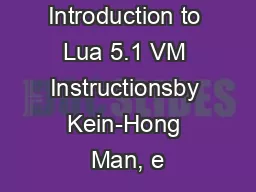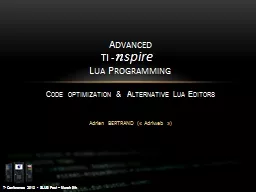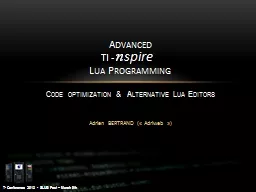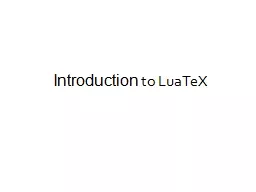PDF-A No-Frills Introduction to Lua 5.1 VM Instructionsby Kein-Hong Man, e
Author : tatiana-dople | Published Date : 2016-06-07
1 Introduction 2 2Lua Instruction Basics 3 3 Really Simple Chunks 5 4Lua Binary Chunks 7 5 Instruction Notation 15 6Loading Constants16 7 Upvalues and Globals 20
Presentation Embed Code
Download Presentation
Download Presentation The PPT/PDF document "A No-Frills Introduction to Lua 5.1 VM I..." is the property of its rightful owner. Permission is granted to download and print the materials on this website for personal, non-commercial use only, and to display it on your personal computer provided you do not modify the materials and that you retain all copyright notices contained in the materials. By downloading content from our website, you accept the terms of this agreement.
A No-Frills Introduction to Lua 5.1 VM Instructionsby Kein-Hong Man, e: Transcript
Download Rules Of Document
"A No-Frills Introduction to Lua 5.1 VM Instructionsby Kein-Hong Man, e"The content belongs to its owner. You may download and print it for personal use, without modification, and keep all copyright notices. By downloading, you agree to these terms.
Related Documents














![[DOWLOAD]-LUA Programming in 8 Hours, For Beginners, Learn Coding Fast: Lua Quick Start](https://thumbs.docslides.com/987855/dowload-lua-programming-in-8-hours-for-beginners-learn-coding-fast-lua-quick-start-guide-exercises-642bca2f5cc3a.jpg)